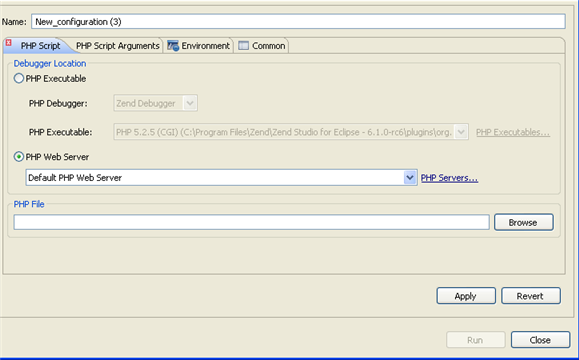Running PHP Scripts Remotely
This procedure describes how to run files in your workspace using your
server's
Note:
Your server must be running the Zend
Debugger or Xdebug in order for remote debugging and
profiling capabilities to function.
The Zend Debugger comes bundled with
|
|
|
|
|
|
|
Your script will be run and displayed in a browser. |
|
Note:
If the file contains 'include' or 'require' calls to
files which are not contained within the project, you must add
them to the project's Include Path in order to simulate your production
environment.
In addition, if a file defined with an absolute path to a server location
(See 'Include Paths' for more on absolute
file locations) is called, a Path Mapping dialog will appear. See Path
Mapping for more information.


